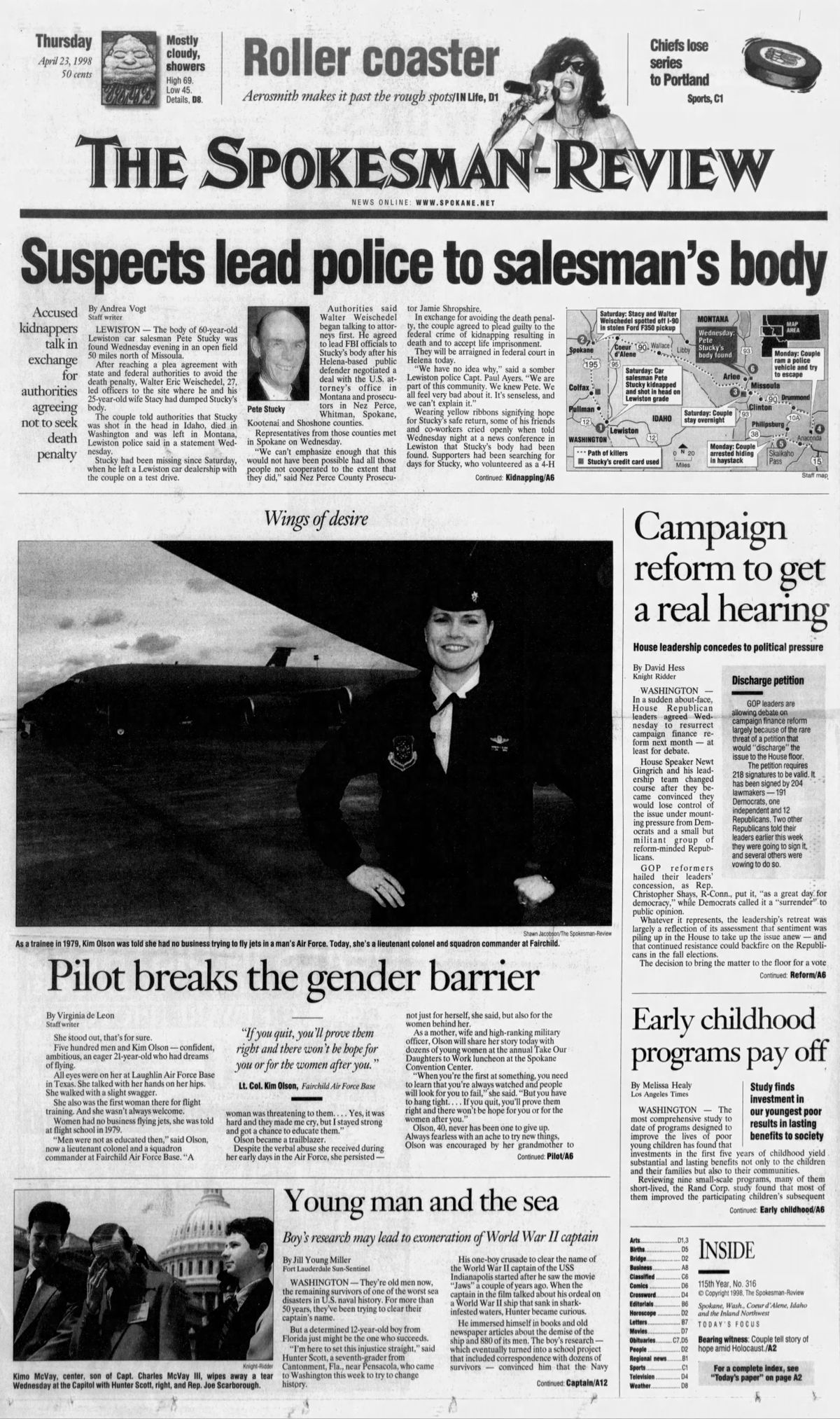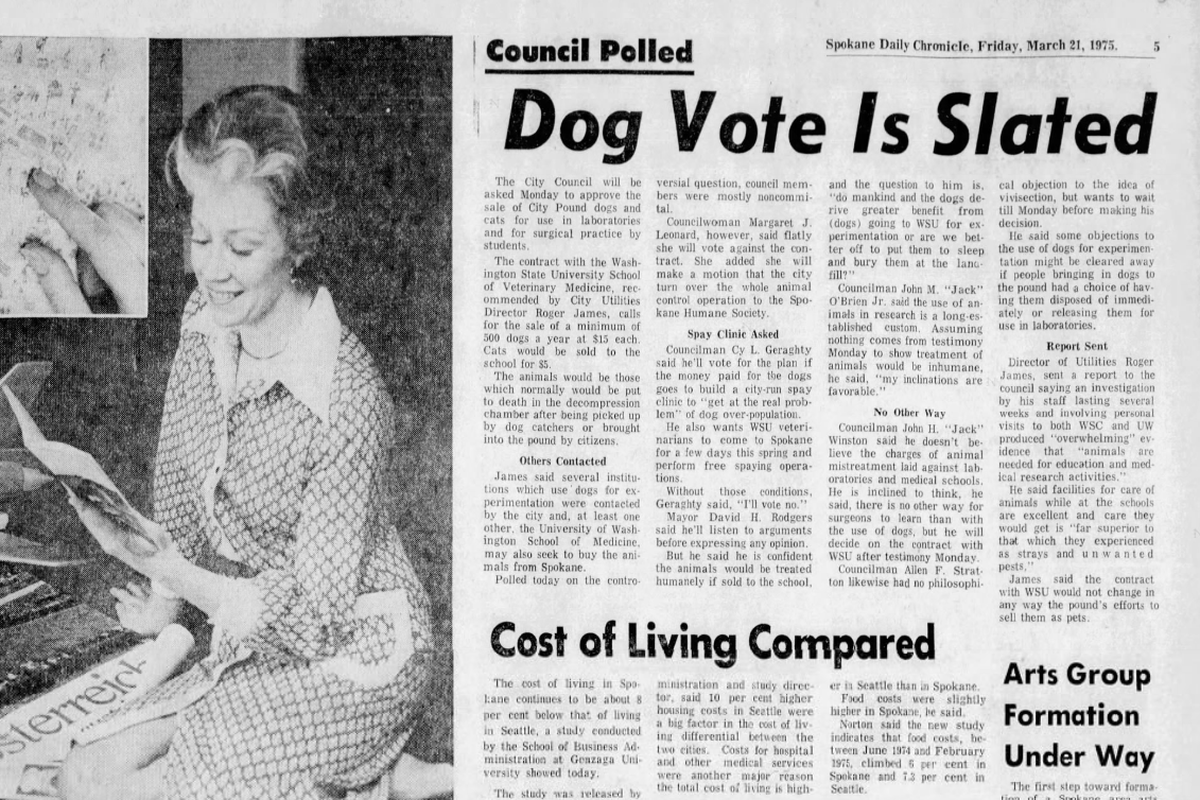This day in history: WSU proposed to buy Spokane’s pound dogs and cats for research; Gonzaga play got costumes from Hollywood silent film
April 23, 1998 -- Pilot breaks the gender barrier. She stood out, that's for sure. Five hundred men and Kim Olson -- confident, ambitious, an eager 21-year-old who had dreams of flying. All eyes were on her at Laughlin Air Force Base in Texas. She talked with her hands on her hips. She walked with a slight swagger. She also was the first woman there for flight training. And she wasn't always welcome. Women had no business flying jets, she was told at flight school in 1979. "Men were not as educated then," said Olson, now a lieutenant colonel and a squadron commander at Fairchild Air Force Base. "A woman was threatening to them ... Yes, it was hard and they made me cry, but I stayed strong and got a chance to educate them." (Spokesman-Review archives)
From 1975: The Spokane City Council was considering a proposal to supply 500 stray dogs a year to Washington State University’s veterinary medicine school at $15 per dog.
Would this be good for the dogs?
City inspectors said yes. After investigating conditions at the school, they said “the facilities for the care of the animals is excellent in all respects – clean and neat; the animals are treated humanely, fed, housed and cared for in a manner far superior to that which they experienced as strays.”
WSU also sought to buy stray cats for $5 each.
The animals would be used for medical research and the school would be “required to hold the animals for a certain period of time” and “feed and care for them.”
What would happen after a “certain period of time?’
“The final disposition of most of the animals used in education and medical research is the same as those unwanted animals experience now – a humane putting to sleep and disposal,” said a city official.
The income would be used to improve and expand the city dog pound.

From 1925: Gonzaga University drama students had to get creative when it came to costumes for their upcoming production of “Golgotha,” a religious passion play.
They sent away for the costumes used in a Hollywood pirate movie called “Sea Hawk,” which included “one of the ‘bloodiest’ battles ever staged before motion picture cameras.”
Those pirates were apparently dressed far more sumptuously than typical pirates. For instance, the title character of “Sea Hawk” wore a “blue and velvet robe with costly gold fringe” and “imposing plumed headpiece.”
In “Golgotha,” that costume would be worn by King Herod.

